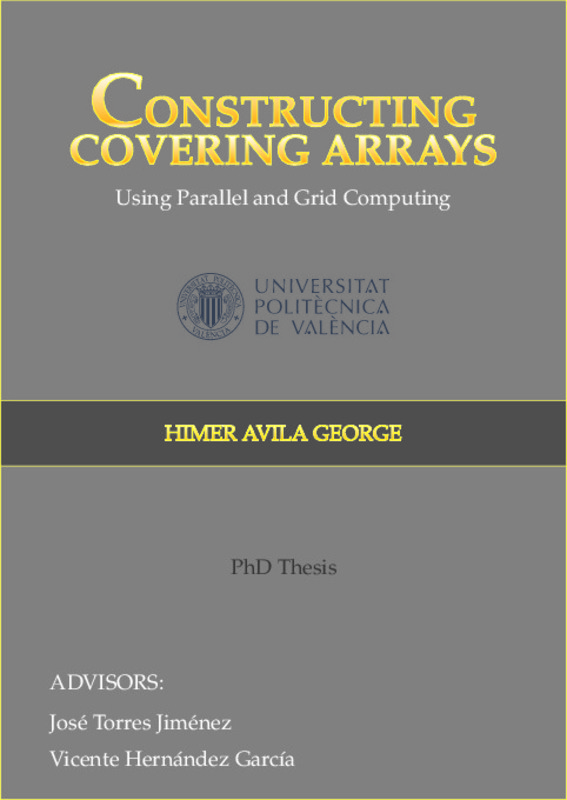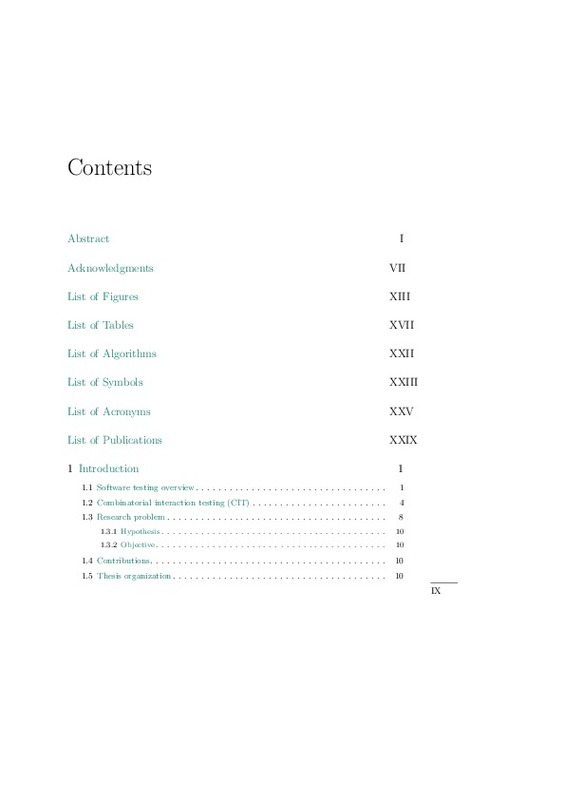- RiuNet repositorio UPV
- :
- Investigación
- :
- Tesis doctorales
- :
- Ver ítem
JavaScript is disabled for your browser. Some features of this site may not work without it.
Buscar en RiuNet
Listar
Mi cuenta
Estadísticas
Ayuda RiuNet
Admin. UPV
Constructing Covering Arrays using Parallel Computing and Grid Computing
Mostrar el registro completo del ítem
Avila George, H. (2012). Constructing Covering Arrays using Parallel Computing and Grid Computing [Tesis doctoral]. Universitat Politècnica de València. https://doi.org/10.4995/Thesis/10251/17027
Por favor, use este identificador para citar o enlazar este ítem: http://hdl.handle.net/10251/17027
Ficheros en el ítem
Metadatos del ítem
| Título: | Constructing Covering Arrays using Parallel Computing and Grid Computing | |||
| Autor: | Avila George, Himer | |||
| Director(es): | Hernández García, Vicente Torres Jimenez, Jose | |||
| Entidad UPV: |
|
|||
| Fecha acto/lectura: |
|
|||
| Resumen: |
A good strategy to test a software component involves the generation of the whole
set of cases that participate in its operation. While testing only individual values
may not be enough, exhaustive testing of all possible ...[+]
|
|||
| Palabras clave: |
|
|||
| Derechos de uso: | Reserva de todos los derechos | |||
| DOI: |
|
|||
| Editorial: |
|
|||
| Tipo: |
|
recommendations
Este ítem aparece en la(s) siguiente(s) colección(ones)
-
Tesis doctorales [5389]







![Text file [Text]](/themes/UPV/images/text.png)


